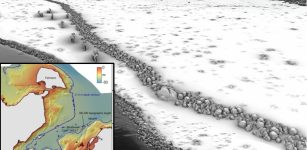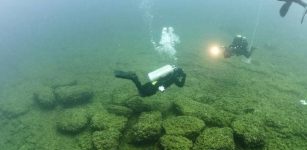Revealing 1,200 Years Of Arctic Canadian Cultures And Settlements In Canada
Conny Waters - AncientPages.com - A study offers insights into ancient Arctic Canadian cultures, focusing on Paleo-Inuit and Thule-Inuit peoples.
Looking down on Pangnirtung, Nunavut. Image credit: - CC BY 2.0
University of Ottawa biology professor Jules Blais and his team detected human settlements on Somerset Island, Nunavut, by analyzing sediment samples.
Various cultures, including the Paleo-Inuit (2500 BCE-1250 CE) and Thule-Inuit (1200-1500 CE), inhabited the Arctic. Despite limited historical evidence, this study offers valuable insights into their presence.
The study found evidence of Paleo-Inuit presence on Somerset Island, Nunavut, Canada, where it was previously unknown. New research methods uncovered detailed information about past human activity without traditional artifacts.
(a) Map of Thule-influenced ponds (PaJs-3 and PaJs-13) and reference ponds (Sav R4 and Sav R5) located on Somerset Island, Nunavut, Canada. The inset image is a map of Canada with Somerset Island outlined by a rectangle. (b) Circular arrangement of bowhead whalebones at PaJs-13. (c) Remnants of Thule structures at PaJs-3. (d) Arrangement of whalebones at PaJs-13. (e) Evidence of whalebones in the pond at PaJs-3. Credit: Proceedings of the Royal Society B: Biological Sciences (2024). DOI: 10.1098/rspb.2023.2915
Professor Jules Blais sis that "by analyzing pond sediment samples, we were able to construct detailed histories of site occupation. This includes clear evidence of Paleo-Inuit presence and indications that the Thule-Inuit arrived earlier than previously estimated."
Archaeological evidence and sedimentary biomarkers were used to study prehistoric settlement on Somerset Island. Analysis of pond sediment cores revealed Thule-Inuit population growth from the 13th to 15th centuries. High metal levels in 20th-century sediment indicated air pollution during that period.
"We used GAMs and radiocarbon dating to identify key periods in the sediment record corresponding to Thule-Inuit arrival and site abandonment," said professor Blais. This helped us detect significant changes in sediment proxies, providing a timeline for understanding human occupation on the island."
The researcher also added that "using sedimentary biomarkers and bone samples to reveal prehistoric habits shows the value of interdisciplinary research."
The findings expand understanding of Arctic Thule-Inuit and Paleo-Inuit communities while showcasing new archaeological methods.
Written by Conny Waters - AncientPages.com Staff Writer






















